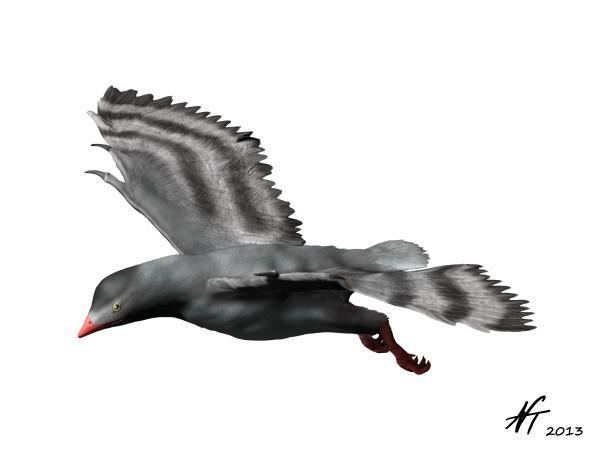Phylum Chordata | Scientific name Concornis lacustris Rank Species | |
 | ||
Genus †ConcornisSanz & Buscalioni, 1992 Similar | ||
Concornis is a genus of enantiornithine birds which existed during the early Cretaceous period, in the late Barremian age or about 125 million years ago, and its remains are known from the Calizas de La Huérguina Formation at Las Hoyas, Cuenca province, Spain. The single known species Concornis lacustris was described from remains of one individual skeleton which is not quite complete but bears feather impressions.
Contents
This was a smallish bird, measuring maybe 13 cm (12.5 in) without tail [1]. Its weight was probably some 75g or more, possibly over 100 g. Nothing is known about its skull, but it was almost certainly still toothed and somewhat snout-like as in its relatives. It was probably an accomplished flyer for its time, though perhaps not as nimble and somewhat lacking in stamina compared to modern birds. It is not known whether it had an alula and it must have possessed a long, narrow pygostyle not known to be associated with Neornithes-like rectrices. The legs were fairly long and neither dedicated to perching on branches nor to running on the ground; it had a large hallux as is generally absent in terrestrial birds.
Systematics
Initially it was believed to be more primitive than Enantiornithes; these were at that time little-known and, as the primitive Iberomesornis was not yet considered to belong there either, contained only very advanced taxa. With more and more enantiornithine material becoming known, the placement of C. lacustris in this group was eventually verified. In fact, despite its early age, C. lacustris seems by no means primitive among the Enantiornithes.
It is sometimes considered a member of the Enantiornithiformes and related to Enantiornis; others reject this placement. A cladistic analysis including many enantiornithine taxa places it in the "Cathayornithiformes", grouping with Sinornis (or Cathayornis) and, surprisingly, Neuquenornis volans which was hitherto believed to belong to a different lineage of Euenantiornithes. Whichever of the two competing hypotheses may be correct, they provide evidence that the Euenantiornithes were accomplished flyers capable of crossing oceans, as in either case close relatives of Concornis' inhabited South America.
A relationship with Sinornis/Cathayornis is suggested mainly by a peculiarly autapomorphic sternum. There is a keel that is small compared to that of modern birds, "Y"-shaped, and the end of the sternum bears deep notches like in the Chinese bird.
Ecology
The habitat and habits of Concornis lacustris are by and large conjectural. Its legs and flight apparatus suggest it was a truly multifuncional generalist bird able to bound through vegetation, run on the ground, and fly equally well. Compared to living birds adapted to each of these ecological niches, it would have certainly been inferior. It was found in an aquatic environment, suggesting it occupied at least partly a "shorebird" niche, and given its size would presumably have fed on small invertebrates like insects or crustaceans. There were terrestrial predators around in its habitat - including its non-avian theropod relatives and crocodilians - from which Concornis would have found it far easier to fly up to some porch than to run away.
